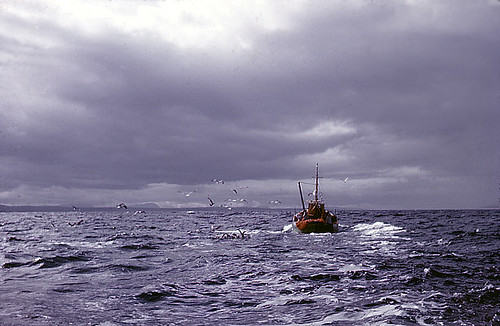 Today, Greenpeace launched a new video featuring the voice of William Shatner calling for the North Pacific Marine Fisheries Council to protect the Bering Sea canyons from industrial fishing.
Today, Greenpeace launched a new video featuring the voice of William Shatner calling for the North Pacific Marine Fisheries Council to protect the Bering Sea canyons from industrial fishing.The “Save Kipper” public service announcement features a happy menagerie of domesticated animals--a fish named Kipper, a dog named Sparky, a bird named Boozer, and a cat named Fluffy--all of which have their homes shockingly destroyed by methods ranging from fire to a power saw.
“We wouldn’t let this happen to Kipper, Sparky, Boozer, or Fluffy,” Mr. Shatner says in the video, “In the ocean, it’s worse.”
“In the ocean, especially in the Bering Sea,habitat destruction by industrial fishing fleets is even more shockingly ruinous than a flaming cat tree or demolished dog house,” Jackie Dragon, Greenpeace USA senior oceans campaigner said. “There’s no rebuilding the ancient habitat that is being destroyed.”
“Alaska’s Bering Sea is home to one of the most remarkable places in the world, an area so rich with life scientists call it ‘the Green Belt.’ Here, the ‘Grand Canyons of the Sea’ support an extraordinary ecosystem that includes fish, crab, skates, endangered sea lions, orcas, and humpback whales, but it all starts with the fragile corals and sponges on the sea floor.”
“Tragically, this amazing ecosystem is under serious threat from industrial fishing fleets that carve up the corals and sponges with their trawl nets. Bottom-tending fishing gear--especially trawl nets--destroys fragile corals and sponges that provide essential habitat, including spawning and nursery areas for fish, crab, and other marine species.”
Despite repeated requests from conservationists to protect this canyon habitat from fishing impacts, the governing body responsible for the Grand Canyons of the Sea, the North Pacific Fishery Management Council, has so far taken no action to curb fishing here or conserve this vital Green Belt ecosystem. The council has blamed its past inaction on a lack of scientific evidence, so Greenpeace has twice gone to the canyons with state of the art submarines equipped with high definition video cameras to bring back the science the council has asked for.
The council is expected to decide how it will proceed in a vote this June.
“This will be the year the council decides either to consider the science and create a pathway to protect the canyons, or to ignore the science and continue the destruction,” Dragon said.
For further information, visit beringseacanyons.org
Source: Greenpeace
Image courtesy of PhillipC via Flickr (CC BY 2.0)
